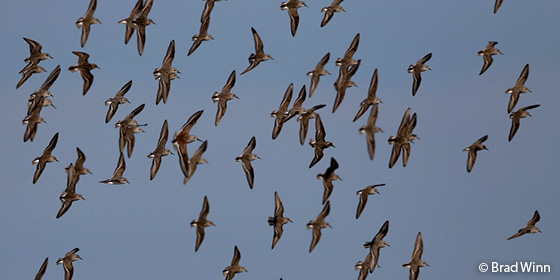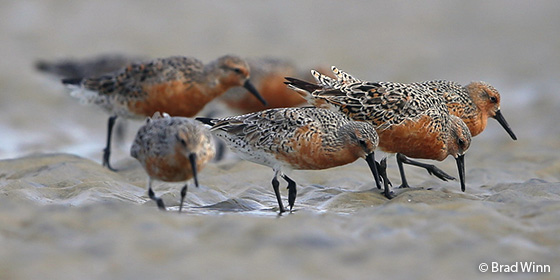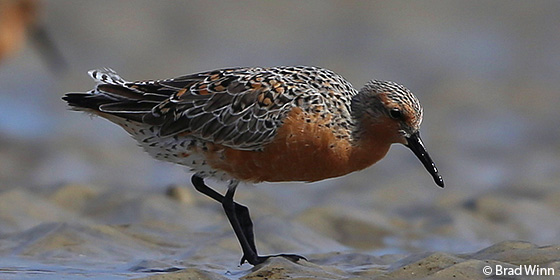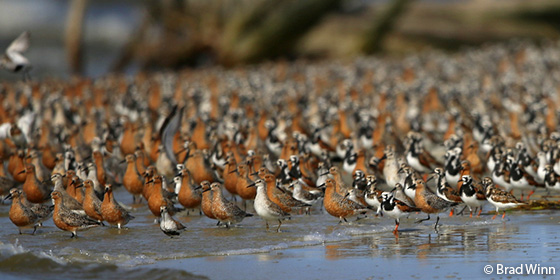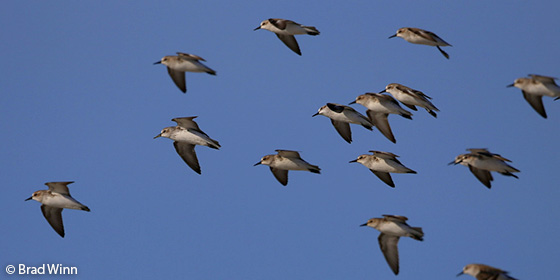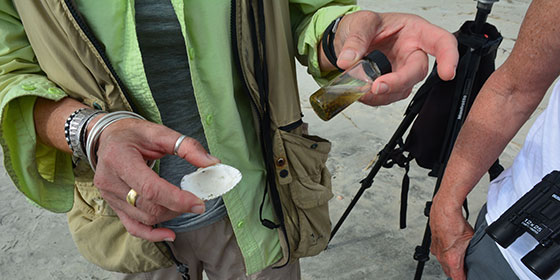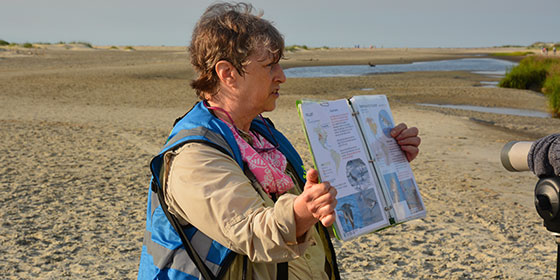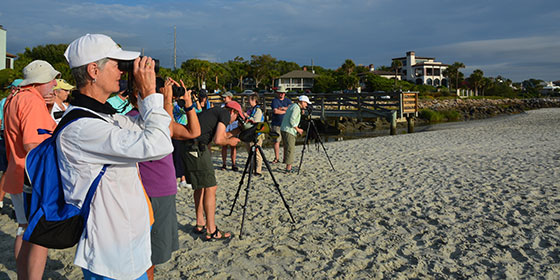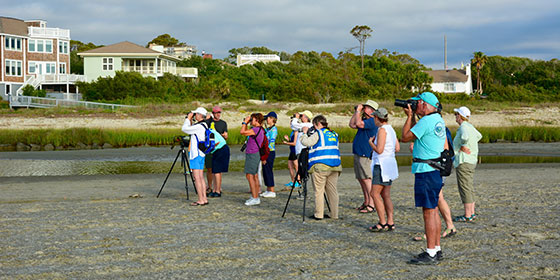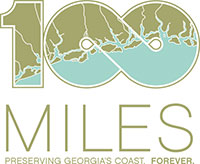Linking Sites, Linking Communities
Atlantic Flyway Exchange
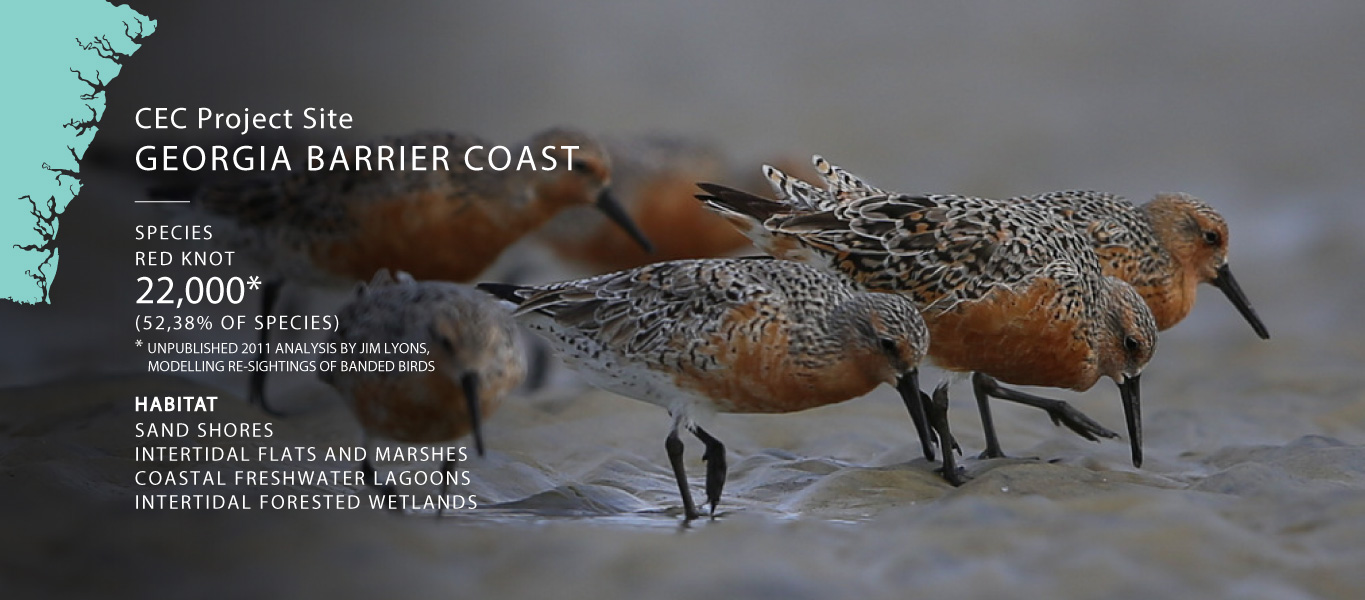
Georgia, United States
A series of islands along Georgia’s 160-km (100-mile) coast provides critical foraging, resting and wintering habitat for over 20 species of shorebirds.
While a smaller portion of the coast, the Altamaha River Delta, is already designated as a Site of Regional Importance under the Western Hemisphere Shorebird Reserve Network (WHSRN), the goal of the CEC project was to support designation of the entire 160-km stretch of barrier islands as a Landscape of Hemispheric Importance.
Shorebird Population
Shorebird population data from multiple sources were collected, collated and analyzed, to support the WHSRN nomination with up-to-date information on nesting, staging, and wintering shorebirds. Stakeholder meetings were also held to build the required support for the nomination. They included state, federal and private land owners and managers from most, but not all, of the barrier islands, as well as representatives from NGOs and academic institutions. In May 2017, the nomination package was submitted for consideration by the WHSRN Hemispheric Council.
Additional Efforts
Additional efforts to reach out to local community members included presentations at special events; digital media articles and social media posts, and the distribution of printed posters outlining simple steps beach-goers can take to help protect shorebirds and sea turtles across the coast.
Photo Gallery
Partners
Sites in this Exchange
James Bay
Ontario, Canada
The aim at this project site was to establish a Western Hemisphere Shorebird Reserve Network (WHSRN) Site of Hemispheric Importance along the southern James […]
Bay of Fundy
New Brunswick and Nova Scotia, Canada
The food-rich mudflats of the Bay of Fundy annually support nearly 30% of the world’s population of Semipalmated Sandpipers, in […]
Delaware Bay
Delaware and New Jersey, USA
In May, hundreds of thousands of shorebirds stop at Delaware Bay to rest and to refuel on horseshoe crab eggs before their long journey to the Arctic[…]
Georgia Barrier Coast
Georgia, USA
A series of islands along Georgia’s 160-km (100-mile) coast provides critical foraging, resting and wintering habitat for over 20 species of shorebirds[…]

Produced with support from the Commission for Environmental Cooperation – www.cec.org
The Commission for Environmental Cooperation (CEC) is an intergovernmental organization that supports the cooperative environmental agenda of Canada, Mexico and the United States to green North America’s economy, address climate change by promoting a low-carbon economy, and protect North America’s environment and the health of its citizens.
To foster North American conservation opportunities for Semipalmated Sandpipers (Calidris pusilla) and Red Knots (Calidris canutus—rufa and roselaari subspecies), the Commission for Environmental Cooperation (CEC) started an initiative to inform, engage and connect communities at key sites for these two species. This included linking sites in the Pacific flyway and the Atlantic flyway.




